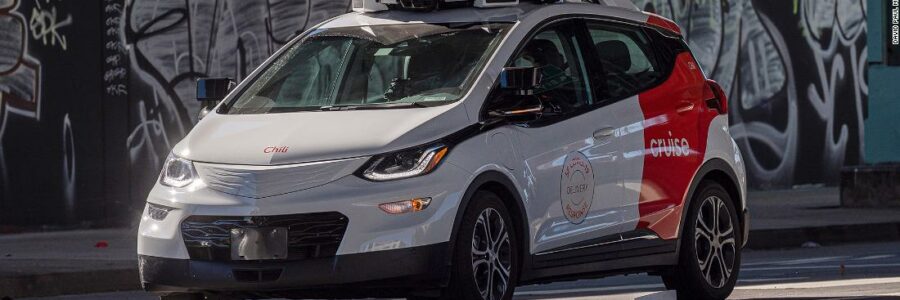
This self-driving car has no steering wheel or pedals
Washington, DC (CNN Business)This week Cruise, which counts General Motors as its largest shareholder, became the first robotaxi operator to recall its vehicles, following a June crash involving “major” damage and minor passenger injuries.
The crash occurred after the Cruise robotaxi making a left turn stopped in the intersection, thinking that an oncoming vehicle would turn in front of it. But the oncoming vehicle instead drove straight, striking the Cruise vehicle. Both the San Francisco police department and National Highway Traffic Safety Administration launched investigations.
Cruise has said that the oncoming vehicle drove in the right-turn lane and was traveling at “approximately 40 mph” in a 25-mph lane before it exited the lane and proceeded forward. Cruise acknowledged in its recall filing that its robotaxi was not “sufficiently reactive.” Cruise spokeswoman Hannah Lindow declined to say what the Cruise vehicle could have done differently, and declined to release video of the crash.
Nevertheless, Cruise said in a statement that it made the recall “in the interest of transparency to the public.”
Cruise said in a document detailing the recall that it has already issued a software update that it says improves the robotaxis’ ability to predict what other vehicles will do, including in conditions similar to the crash.
Tesla, arguably a Cruise competitor in the long-term, has been criticized in the past for making software updates to its vehicles while not always issuing a recall. NHTSA has been more proactive on recalls of late and Tesla issued four recalls in a 12-day span earlier this year.
Software updates like what Cruise did, often called “over-the-air-updates,” are generally not financially burdensome to companies in the way traditional recalls have been, because there aren’t costs for physical parts and the labor to install them.
“Automated driving developers are constantly revising their software, including to address potential safety issues,” Bryant Walker Smith, a professor at the University of South Carolina law school who researchers autonomous vehicles, told CNN Business. “It’s to the company’s credit that they treated this particular safety-relevant update as a recall under federal law.”
Cruise continued to operate its robotaxi service in San Francisco following the crash. But at some point after the crash, which Cruise didn’t disclose, it disabled its vehicles’ ability to make unprotected left turns and reduced the area where its robotaxis operated. Cruise has gradually reintroduce unprotected left turns since making the software update on July 6. An unprotected left turn is a turn where there is not a left-turn signal that indicates when it’s a vehicles’ opportunity to go.
Unprotected left turns are generally considered one of the more challenging things that a fully autonomous vehicle performs. Waymo’s robotaxis in Arizona, for example, sometimes avoid these turns to help minimize risks.
Cruise became the second company to offer a fully autonomous ridehail service when it launched in San Francisco in February, but only during late-night hours. The collision that led to the recall occurred at 11 pm, according to Cruise’s report filed to the California Department of Motor Vehicles.
Cruise’s robotaxis have delighted some passengers but also have had shortcoming, including technical glitches and flaws like blocking a firetruck responding to a multi-alarm fire this April, according to the San Francisco Fire Department. Photos have also surfaced of a group of Cruise vehicles blocking lanes on a San Francisco street.
Developing and operating robotaxis is extremely difficult and expensive. Cruise has added shareholders in addition to GM, including Honda, Microsoft and Walmart. Cruise lost $500 million in the second quarter of this year, according to GM financial filings.
GM CEO Mary Barra said last month that the market for robotaxis would probably be several billion dollars once robotaxis rides were available for $1 per mile, cheaper than human-driven Uber and Lyft’s, which are often several dollars per mile and sometimes more.
“It’s very much going to be a big part of how we move from point A to point B because it’s safer,” Barra told Fox Business.
NHTSA has no performance standards for fully autonomous vehicles like Cruise’s, but has said it will pursue recalls as needed.
Source: Read Full Article